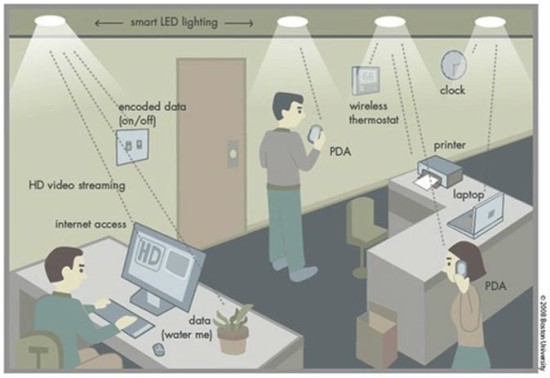Today we have the benefits of WiFi, that hidden connection that can pick you up anywhere as long as you are within reasonable range to a transmitter. Wifi has been great for most applications but its speed is quite limited, without spending large amounts of money anyway, which is not practical for most people.
Enter LiFi!
Li-Fi was invented by Harald Haas from the University of Edinburgh, Scotland in 2011, when he demonstrated for the first time that by flickering the light from a single LED, he could transmit far more data than a phone mast: 224GB per second!Li-fi uses visible light communication which is a medium using visible light between 400 and 800 THz.
It works just like sending messages through morse code with mirrors and sunlight, the LED’s flicker and transmit data through Binary. I am sure most of us do not like that flickering that overhead lighting gives off sometimes, never fear though, these LED’s switch on and off at speeds undetectable to the human eye which is limited to 30fps.
The benefits are obvious with regards to speed, the hidden benefits though are the security side of things. The light does not leave the building thus making it much more secure and harder to hack.
Haas and his team have launched PureLiFi, a company that offers a plug-and-play application for secure wireless Internet access with a capacity of 11.5 MB per second, which is comparable to first generation Wi-Fi. And French tech company Oledcomm is in the process of installing its own Li-Fi technology in local hospitals.
“All we need to do is fit a small microchip to every potential illumination device and this would then combine two basic functionalities: illumination and wireless data transmission,” Haas said. “In the future we will not only have 14 billion light bulbs, we may have 14 billion Li-Fis deployed worldwide for a cleaner, greener, and even brighter future.”
So not only do we benefit but the rest of the planet does at the same time.

